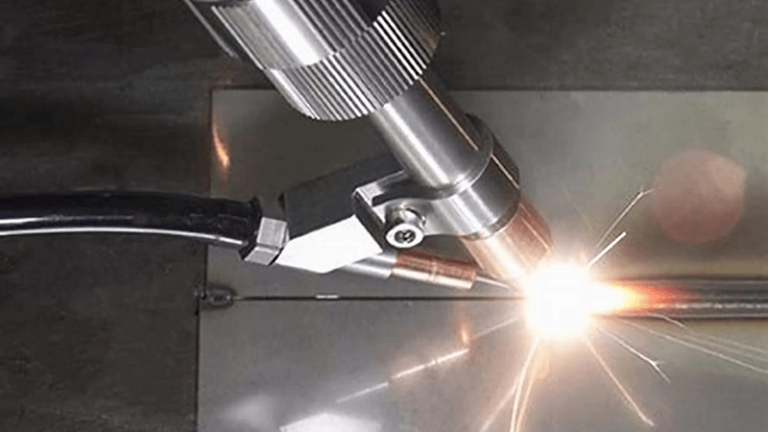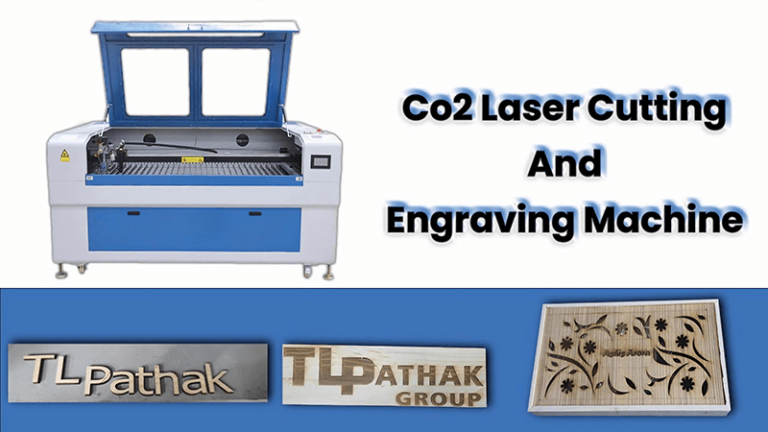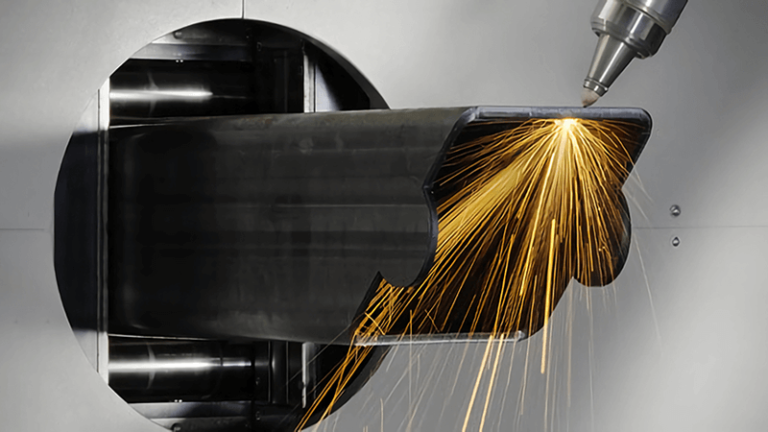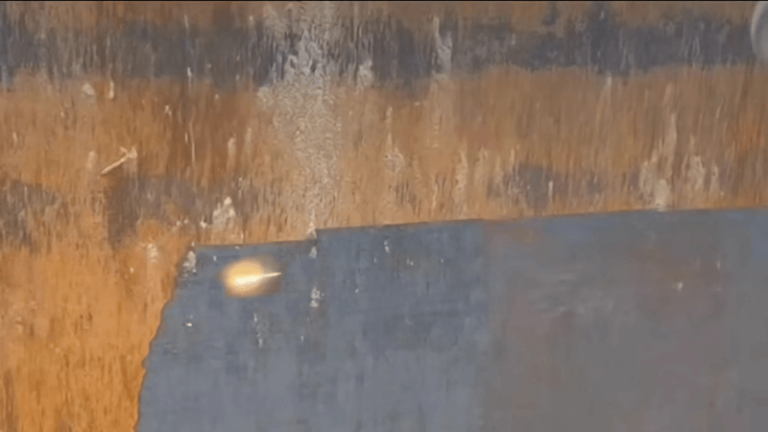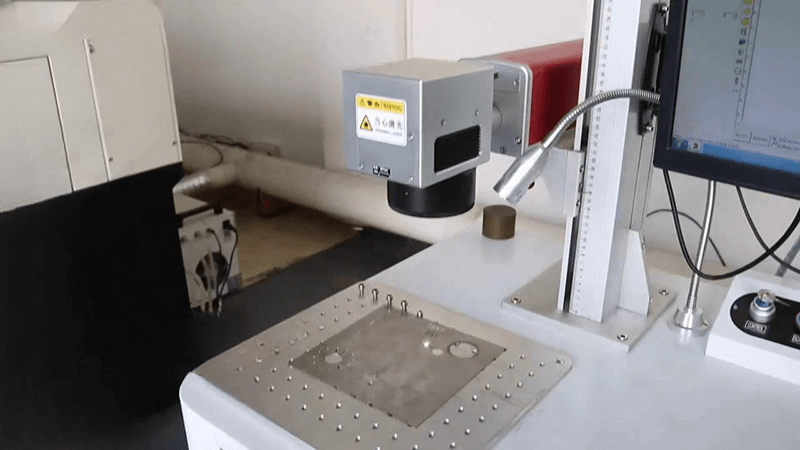
Are you tired of the same old methods of personalization? Let’s face it—etching initials on a gift with a knife or using paint pens isn’t cutting it anymore. Enter laser engraving, a game-changing technology that's taking customization to a whole new level.
Laser engraving is precise, versatile, and can make your projects look professional with minimal effort. Whether you’re crafting personalized gifts or creating industrial-grade designs, this tech can do it all.
But what exactly is laser engraving? And how do you get started without feeling overwhelmed? Let’s dive into this beginner-friendly guide.
What is Laser Engraving and How Does It Work?
Laser engraving involves the use of a high-energy density laser to remove material from the surface of an object, creating a design or pattern. It operates without contact, meaning the laser does not physically touch the material, which helps avoid wear and tear that occurs with traditional engraving methods. This technique can be applied to a wide range of materials including metals, wood, glass, and plastics, producing high-contrast markings that are durable and resistant to abrasion.
This technique is used across industries—from jewelry to aerospace. Don't just take my word for it; here's a quick primer on laser engraving basics.
Laser engraving operates without contact, reducing wear and tear compared to traditional engraving methods.True
The laser does not physically touch the material, preventing damage during engraving.
Fiber laser engraving machines are best suited for engraving soft materials like wood and leather.False
Fiber lasers specialize in engraving metals and certain hard plastics, not soft materials like wood or leather.
How Does Laser Engraving Work?
Laser engraving is a precise and versatile method that uses a focused laser beam to create designs, patterns, or text on various materials. The process involves several key steps:
Design Creation
The process begins with creating a digital design using graphic design software, such as Adobe Illustrator or CorelDRAW. The design is then converted into a format compatible with the laser engraving machine, typically vector files like DXF, SVG, or AI formats.
Machine Setup
The material to be engraved is securely placed on the machine's work area. The operator configures the machine by setting parameters such as:
- Laser power
- Speed
- Frequency
These settings depend on the material being used (e.g., wood, metal, glass, plastic) and the desired engraving depth or effect. The machine’s computer-controlled movements are then calibrated to ensure precision.
Laser Activation
Once activated, the laser beam focuses a highly concentrated beam of light onto the material's surface. This beam generates intense heat that either vaporizes the material or alters its color. The specific interaction depends on the laser settings and the material properties:
- Laser Ablation: Removes material by vaporizing it layer by layer.
- Concave Engraving: Creates grooves or depressions in the surface.
- Convex Engraving: Produces raised designs by selectively removing surrounding material.
Engraving Process
The laser engraves the material by moving in a controlled manner. There are two primary methods:
- Raster Engraving: The laser moves line by line, similar to how a printer works, to create detailed images or text.
- Vector Engraving: The laser follows a continuous path, ideal for outlining designs or cutting through the material.
Advanced laser engraving machines may also include features like auto-focusing for precision and rotary attachments for engraving cylindrical objects.
Completion
After the engraving process is complete, the material is inspected. Typically, no additional post-processing is required, as the laser leaves clean and polished edges. However, optional finishing touches, like cleaning residue or applying coatings, can enhance the final product.
Laser engraving can produce durable, high-contrast markings on various materials, including metals, glass, and plastics.True
The precision and versatility of laser engraving allow for clear and lasting markings on a wide range of materials.
YAG laser engraving machines are primarily designed for DIY craft projects.False
YAG lasers are high-powered and designed for industrial applications, such as aerospace and medical equipment engraving, not small-scale DIY crafts.
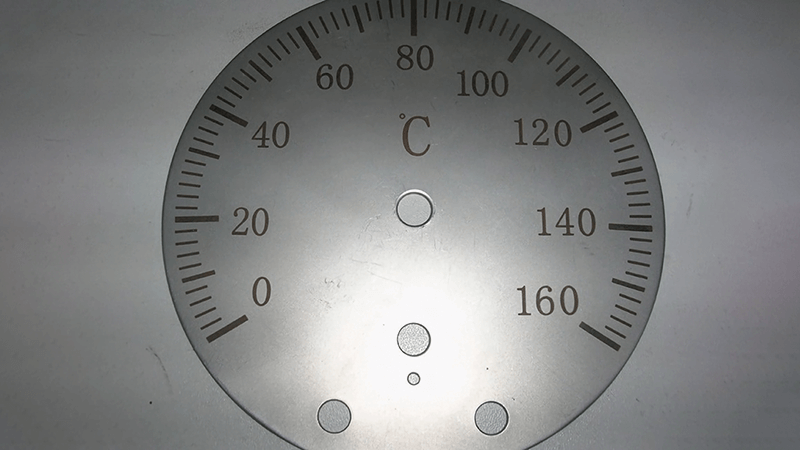
Why Choose Laser Engraving?
Laser engraving isn't just cool; it's practical. Here’s why:
- Accuracy: The precision of a laser beam can’t be matched by hand tools.
- Speed: Projects that take hours manually can be done in minutes.
- Durability: Engravings are permanent and resistant to wear.
Traditional methods like manual etching or chemical engraving pale in comparison. Want proof? Check out this comparison of engraving methods.
What Types of Laser Engraving Machines Are Available?
Not all laser machines are created equal. Here’s a breakdown:
Laser engraving machines are versatile tools used across industries for precision engraving, cutting, and marking. Each type of laser machine is designed for specific materials and applications. Below is a comprehensive guide to the main types of laser engraving machines:
CO2 Laser Engraving Machines
-
Material Compatibility: Best for non-metal materials such as wood, acrylic, leather, glass, paper, rubber, and some plastics.
-
Functionality:
- Operates at a wavelength of around 10.6 micrometers.
- Ideal for engraving, cutting, and marking applications with high precision.
- Provides intricate details and smooth edges.
-
Applications:
- Advertising (e.g., signage and banners).
- Arts and crafts (custom decorations and designs).
- Industrial manufacturing.
- Jewelry making (engraving patterns and text).
- Custom gifts (personalized engraving on items like photo frames and wallets).
Fiber Laser Engraving Machines
-
Material Compatibility: Specializes in engraving metals such as stainless steel, aluminum, brass, copper, titanium, and even coated metals.
- Can also engrave certain plastics and ceramics.
-
Functionality:
- Operates at a wavelength of approximately 1064 nanometers.
- Known for speed, efficiency, and deep marking capabilities.
- Performs tasks like engraving, cutting, etching, and marking with high precision.
-
Applications:
- Automotive industry (marking serial numbers or parts).
- Electronics (engraving QR codes and logos on components).
- Jewelry (fine engraving on rings or watches).
- Manufacturing (high-volume production lines for custom branding).
UV Laser Engraving Machines
-
Material Compatibility: Ideal for delicate and sensitive materials like glass, plastics, ceramics, silicon wafers, and certain metals.
-
Functionality:
- Operates at a shorter wavelength of approximately 355 nanometers.
- Generates minimal heat, reducing the risk of material damage (cold engraving).
- Excellent for precision micro-marking.
-
Applications:
- Electronics (marking PCBs and delicate circuits).
- Medical devices (engraving surgical instruments and tools).
- Anti-counterfeiting (fine, intricate patterns on high-value items).
- Creative designs on fragile materials like glass.

YAG Laser Engraving Machines
- Material Compatibility: Suitable for both metals and non-metals, including ceramics and certain plastics.
- Functionality: High-powered, adaptable lasers capable of engraving harder surfaces.
-
Applications:
- Medical equipment (engraving on tools and devices).
- Aerospace (engraving on components and ceramics).
- Industrial applications requiring durability.
Diode Laser Engraving Machines
- Material Compatibility: Best for softer materials like leather, plastic, and wood.
- Functionality: Energy-efficient and portable, but less powerful than CO2 or fiber lasers.
- Applications: Small-scale projects, such as DIY crafts or custom leather designs.
Green Laser Engraving Machines
- Material Compatibility: Works well on sensitive materials like precious metals, glass, and thin ceramics.
- Functionality: Cold marking laser, minimizes heat impact to preserve material integrity.
-
Applications:
- Jewelry (engraving intricate designs without distortion).
- Electronics (marking components like circuit boards).
- Luxury goods (personalized engraving on watches or glasses).
What Materials Can You Laser Engrave?
The beauty of laser engraving is its versatility. You can work with:
- Metals: Create industrial labels or custom jewelry.
- Plastics: Engrave logos on promotional items.
- Wood: Make artistic designs on furniture or decor.
- Glass: Add an elegant touch to wine glasses.
- Leather: Craft personalized wallets or bags.
For inspiration, see this gallery of laser-engraved projects.
| Material | Types | Characteristics |
|---|---|---|
| Wood | Hardwoods (oak, walnut), softwoods (pine), plywood, MDF | Natural look, easy to engrave, softer woods are generally easier to work with. |
| Acrylic | Various colors and thicknesses | Versatile, easy to cut and engrave, produces clean and detailed results. |
| Metals | Stainless steel, aluminum, brass, copper, titanium | High precision engraving with fiber lasers; CO2 lasers can engrave coated metals. |
| Glass | - | Creates elegant designs; requires careful settings to avoid cracking. |
| Leather | Natural leather (cowhide, lambskin), synthetic leather | Produces tactile engravings; quality affects the outcome. |
| Stone | Marble, granite, slate | Durable; used for memorials and decorative pieces; requires powerful lasers. |
| Fabric/Textiles | - | Less common; used for custom clothing or accessories. |
| Paper/Cardboard | - | Allows for intricate designs and personalization; suitable for stationery and art. |
| Plastics | ABS, PVC, polycarbonate, Delrin | Versatile with a range of colors; some emit harmful fumes when engraved. |
| Rubber | - | Commonly used in stamps and seals due to flexibility and durability. |
UV laser engraving machines are ideal for micro-marking on delicate materials due to minimal heat generation.True
UV lasers use cold marking techniques, making them perfect for delicate materials like glass and silicon wafers.
CO2 laser engraving machines are the most energy-efficient and portable option for industrial use.False
CO2 lasers are versatile but are not typically the most energy-efficient or portable compared to diode lasers.
How to Get Started with Laser Engraving?
Getting started is easier than you think:
- Choose the Right Machine: A CO2 laser is great for beginners, while fiber lasers are better for industrial projects.
- Plan Your Projects: Decide on your material and design.
- Practice, Practice, Practice: Start with simple projects to get a feel for the machine.
Still unsure? Check out this beginner’s guide to laser engraving.
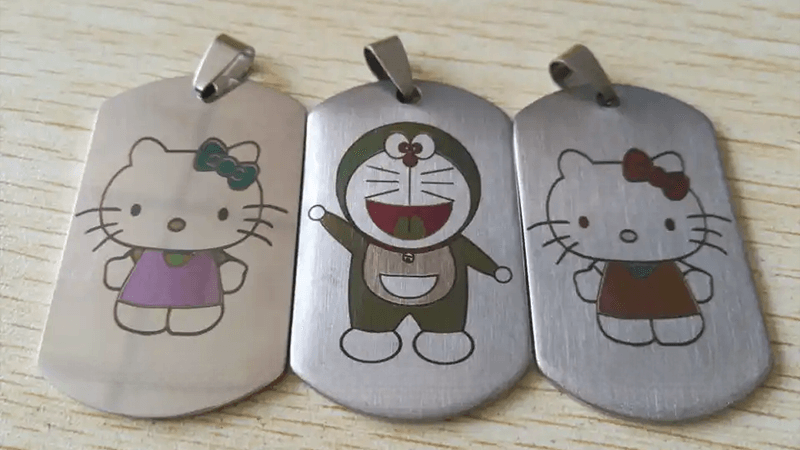
Maintaining and Caring for Your Laser Engraver
A well-maintained laser machine is a happy laser machine. Here are some tips:
- Clean the Lens: Dust can reduce laser power.
- Check Cooling Systems: Overheating is the enemy.
- Update Software: Ensure you’re running the latest firmware.
These steps not only extend your machine's lifespan but also keep your projects looking sharp. Need more tips? Here’s how to maintain your laser engraver.
Step-by-Step Guide to Using a Laser Engraver
1.Setting Up Your Laser Engraver
- Ensure the machine is fully assembled, securely connected, and powered.
- Attach or activate a ventilation system to handle fumes and smoke effectively.
- Familiarize yourself with safety protocols:
- Always wear protective eyewear rated for your laser's wavelength.
- Keep a fire extinguisher nearby for added safety.
-
Creating Your Design
- Use graphic design software like LightBurn, CorelDRAW, or Adobe Illustrator.
- Save your design in vector formats (e.g., SVG, DXF, or EPS) for precise engraving paths.
- Double-check the design size to match your material dimensions.
-
Preparing the Material
- Securely place the material on the worktable; use clamps or masking tape to prevent shifting.
- For materials prone to smoke stains, apply masking tape or a protective coating to the surface.
- Ensure the material surface is clean and free from dust or debris.
-
Calibrating the Machine
- Focus the Laser: Adjust the laser head to focus on the material's surface. Many machines feature auto-focus for convenience.
- Set Parameters:
- Adjust the power, speed, and resolution settings based on the material type and thickness.
- Refer to the machine’s material guide for recommended settings.
- Run a test engraving on a scrap piece to ensure the parameters produce the desired results.
-
Starting the Engraving Process
- Load your design into the machine's software and align it with the material on the worktable.
- Begin the engraving job via the software interface.
- Monitor the process:
- Stay nearby to address any issues such as material shifting or unexpected errors.
- Pause or stop the machine immediately if you notice overheating or burning.
-
Post-Engraving Finishing
- Remove the engraved item carefully to avoid smudging or scratches.
- Clean the item with a soft cloth or brush to remove residue or soot.
- Inspect the engraving quality for precision and depth; make notes of any adjustments needed for future projects.
Pro Tips for Optimal Results
-
Perform a Test Run: Always test on scrap material before engraving the final piece.
-
Adjust Settings by Material:
- Softer materials like leather or wood require lower power and faster speeds.
- Harder materials like metal or acrylic may need higher power and slower speeds.
-
Keep a Settings Log: Record successful power, speed, and resolution settings for different materials.
-
Regular Maintenance:
- Clean the laser lens and mirrors frequently to maintain engraving precision.
- Check and tighten machine components periodically to prevent misalignments.
By following these steps and tips, you'll achieve precise, professional-quality engravings with consistency.
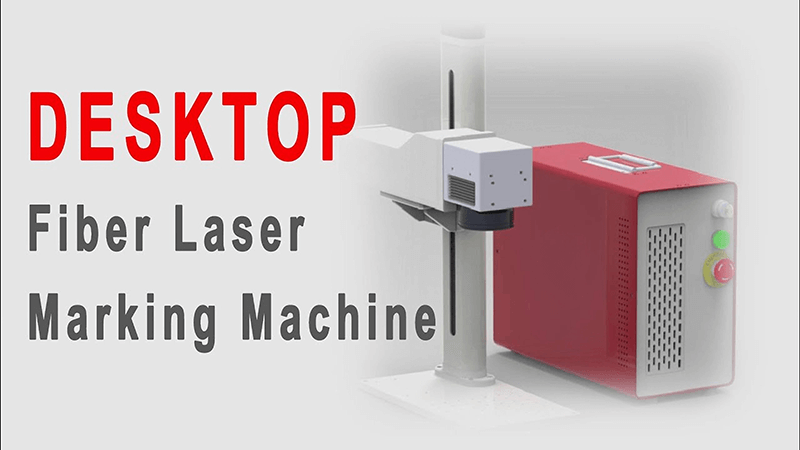
Conclusion: Start Your Laser Engraving Journey Today
Laser engraving opens up a world of creative and professional possibilities. From personalized gifts to industrial-grade projects, there’s something for everyone. Ready to take the plunge? Check out Kirin Laser’s cutting-edge machines here and start crafting like a pro today! Contact us to your perfect laser engraving machine.
References:
- "Top Benefits of Using Laser Marking on Metal", from Laser Kirin Laser.
- "A Complete Guide of Mopa Laser Marking Machine", from Kirin Laser.
- "The Complete Guide to Laser Machine Engraving." from Kirin Laser.
- "How Are Laser and Engraving Machines Transforming Custom Manufacturing?", from Kirin Laser.
- "How Laser Engraving Transforms Industrial Manufacturing.", from Kirin Laser.
- "Top Applications of Laser Etching Machines in Modern Industries: Why Should You Care?", from Kirin laser.
- "How to Use a Laser Engraver as a Beginner", from Algolaser.
- "Laser Engraving: A ultimate guide", from Sculpteo.


